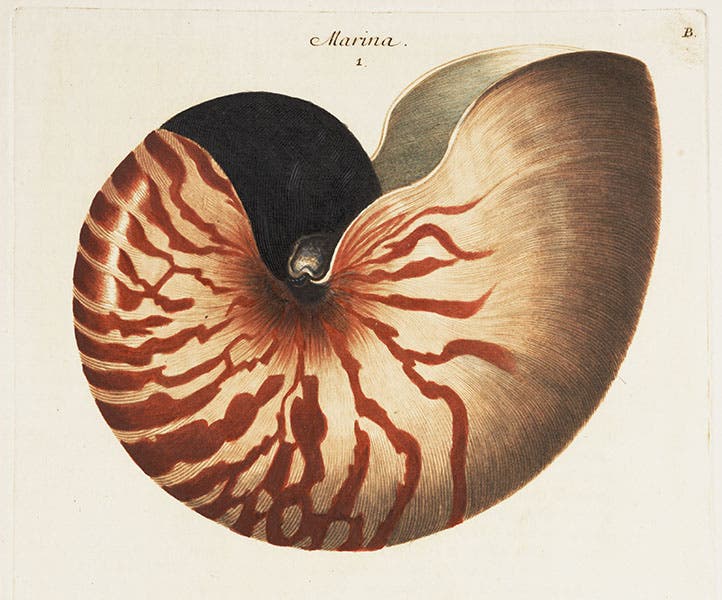Scientist of the Day - Georg Wolfgang Knorr
Georg Wolfgang Knorr, a German engraver, was born Dec. 30, 1705. Knorr was introduced to natural history engraving when, while still an apprentice, he worked on the plates for Johann Scheuchzer's popular Physica sacra (1731-35; we have a copy in the History of Science Collection). In the 1750s, Knorr began issuing his own sumptuous folios. One such work, Sammlung von Merkwürdigkeiten der Natur (Collection of Curiosities of Nature, 1755), which we do not have in our Collection, was an illustrated encyclopedia of fossils, all beautifully engraved and colored by Knorr. It was one of the first such books to recognize that all these fossils are the remains of once-living creatures, and it set the stage for the later discovery that one could use such fossils to order and date the rocks that contain them. Knorr published only one volume of this Sammlung before he died, but it was continued in three more volumes by Johann E. I. Walch (1773) and is a beautiful publication.
Equally beautiful is Knorr's Deliciae naturae selectae (A Selection of Nature’s Delights, 1754), an encyclopedia of nature in the present, rather than the past, and this book we do have in the Library, in a 1766-67 second issue. It shows mostly shells, with a few animals and birds thrown in, and most of the objects depicted were taken from cabinets of curiosities in Nuremberg. Folio-sized and in full hand-color, the Deliciae is one of the most attractive books of the century. We originally intended to display the work in our Grandeur of Life exhibition in 2009, but it did not make the final cut. But in preparation, we picked out and had scanned 12 favorite images, and we selected seven of them for this post. They are: the introductory engraved vignette (first image) from the engraved title page (second image); a detail of a pearly nautilus (third image); a pearly nautilus sliced in half to reveal the Archimedean spiral within, with a paper nautilus below (fourth image); both sides of a horseshoe crab, with a lobster (fifth image); and an inflated duo from the deep – a porcupine fish and a puffer fish (sixth image). Finally, I wanted to show a detail of a plate on metallic specimens, so you can see what attention and skill went into the hand-coloring of these engraving (seventh image)
The complete book was digitized when we were planning our exhibit, and it has just been made available online, where you can make your own selection of favorite plates.
There is a portrait of Knorr on Wikipedia; it seems genuine enough, but I do not know its source.
Dr. William B. Ashworth, Jr., Consultant for the History of Science, Linda Hall Library and Associate Professor emeritus, Department of History, University of Missouri-Kansas City. Comments or corrections are welcome; please direct to ashworthw@umkc.edu.












